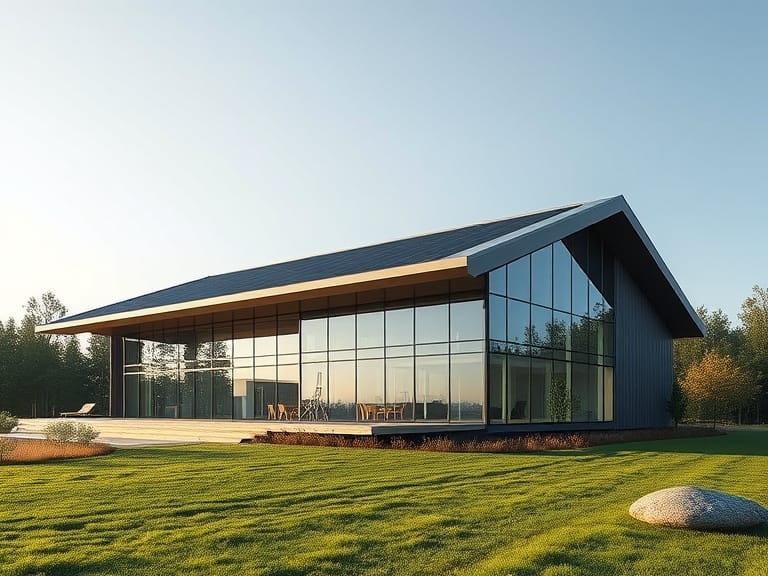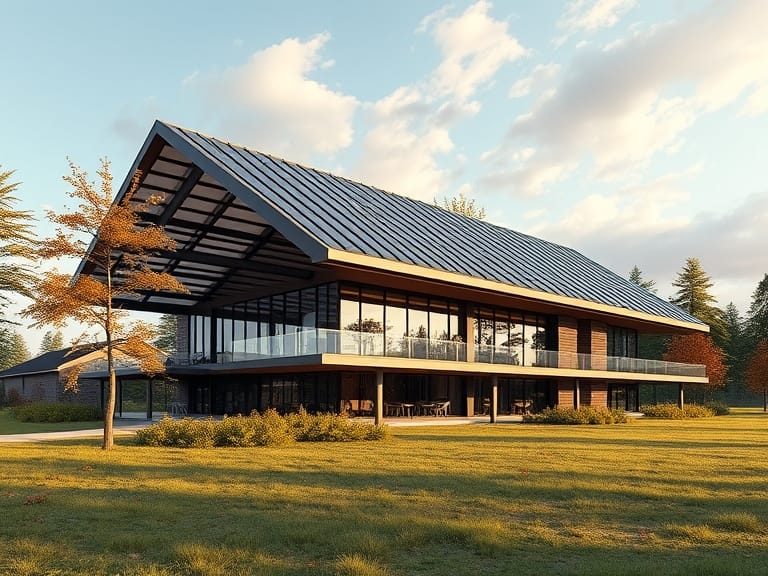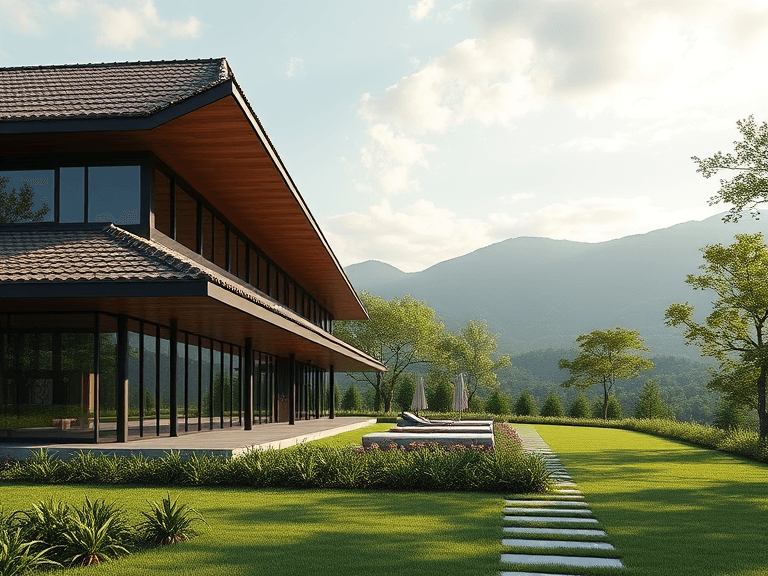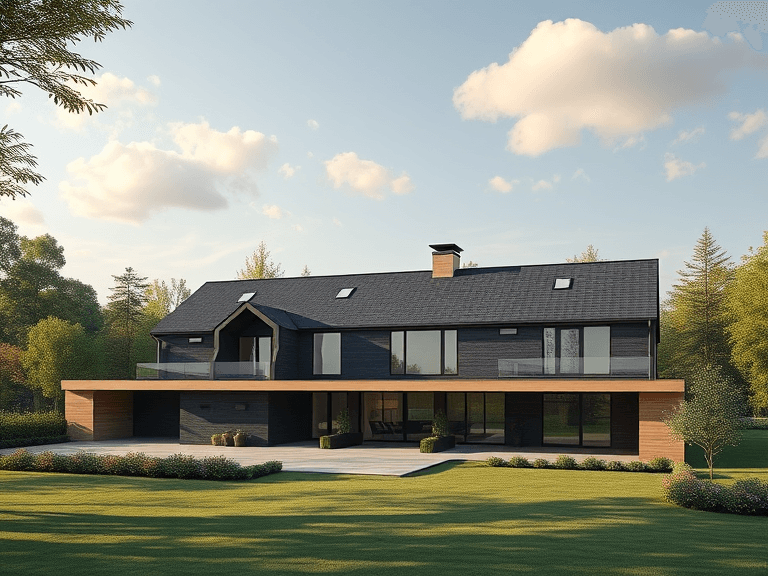
Steel roofing represents a modern architectural choice that is becoming increasingly favored among homeowners due to its durability and potential cost-effectiveness. Composed primarily of steel sheets or shingles, this roofing material is known for its strength and longevity, often outpacing traditional options such as asphalt shingles, wood, or tile roofing. Unlike these conventional materials, steel roofs can withstand severe weather conditions, including high winds, heavy rain, and snow, making them an attractive option for regions prone to extreme climates.
An important aspect that sets steel roofing apart is the variety of finishes and coatings available. These surfaces not only provide aesthetic appeal but also enhance corrosion resistance, contributing to the roof’s lifespan and reducing the need for frequent replacements. This aspect underscores one of the primary benefits of choosing steel roofing materials—its low maintenance requirements. Homeowners can enjoy long-lasting protection without the regular upkeep that other roofing systems may necessitate.
The rise in popularity of steel roofs can also be attributed to the growing awareness around sustainability and energy efficiency. Steel roofing provides excellent insulation, which can lead to decreased energy consumption. Furthermore, a significant portion of steel is recycled content, positioning steel roofing as an environmentally friendly option in the market. These combined features continue to fuel the momentum for steel roofs, leading more homeowners to explore the countless benefits of choosing steel roofing materials for their residences.
Durability and Longevity
One of the most significant advantages of choosing steel roofing materials is their remarkable durability and longevity. Steel roofs are engineered to withstand extreme weather conditions, making them an excellent choice for homeowners residing in areas prone to heavy rains, hail, or strong winds. Unlike traditional roofing materials, such as asphalt shingles, which can deteriorate rapidly under such conditions, steel roofing systems are designed to endure, providing reliable protection for many years.
In addition to their resistance to harsh weather, steel roofs also demonstrate an impressive ability to resist rust and corrosion. Modern steel roofing is often coated with protective layers, such as zinc or aluminum, which significantly enhance their resilience against oxidation. This protection ensures that your roof maintains its integrity over time, reducing the need for frequent maintenance or replacement. In contrast, materials like asphalt and wood may succumb to mold and decay, requiring more regular upkeep, which can become a financial burden.
The average lifespan of steel roofing materials further underscores their advantageous qualities. Steel roofs can last anywhere from 40 to 70 years, depending on the quality of the materials and installation. This lifespan far exceeds that of asphalt shingles, which typically last only 15 to 20 years. By investing in steel roofing, homeowners can enjoy long-term peace of mind knowing they won’t have to replace their roof frequently. Overall, the durability and longevity of steel roofing materials not only contribute to the protection of the home but also align with economic considerations, providing an exceptional return on investment over time.
Energy Efficiency
Choosing steel roofing materials offers numerous benefits, particularly in the realm of energy efficiency. One of the most significant advantages is the installation of reflective coatings that reduce heat absorption. These specially designed coatings can reflect solar radiation and minimize the amount of heat transferred into the building, resulting in a cooler interior during hot months. This reduction in heat absorption is crucial for maintaining comfortable indoor temperatures without relying excessively on air conditioning systems.
By reducing cooling costs, homeowners can significantly decrease their energy consumption, which not only contributes to lower utility bills but also minimizes environmental impact. The energy savings achievable through steel roofing can be substantial. Studies indicate that homes with metal roofs can save between 10% to 25% on cooling costs compared to homes with traditional asphalt shingles. Furthermore, the longevity and durability of steel roofing materials mean they often require less frequent replacement, which can also lead to long-term energy savings and resource conservation.
In addition to the immediate financial benefits, choosing steel roofing materials can make homeowners eligible for various tax credits and incentives related to energy-efficient upgrades. Many local and federal programs are designed to encourage the installation of energy-efficient roofing solutions. These incentives can provide additional motivation to consider steel as a viable option for roofing. In conclusion, the energy efficiency of steel roofing materials not only contributes to reduced energy costs but also promotes a sustainable approach to home building, making it an ideal choice for environmentally conscious homeowners.
Low Maintenance Requirements
One of the most compelling benefits of choosing steel roofing materials is their remarkable low maintenance requirements. Steel roofs are designed to withstand various environmental conditions, making them highly durable and resistant to common issues that afflict other roofing materials. Unlike wooden roofs, which may suffer from rot or create a habitat for insects, steel roofs remain impervious to such damage. This resilience ensures that homeowners do not have to worry about frequent repairs or replacements, thereby saving both time and resources.
Additionally, steel roofing materials are often coated with protective finishes that enhance their longevity, further reducing the need for maintenance. These coatings provide a barrier against rust and corrosion, essential factors for roofs exposed to harsh weather conditions. As a result, the frequency of required inspections and upkeep diminishes significantly. Homeowners can enjoy peace of mind, knowing that their roofs will remain intact and functional for many years with minimal intervention.
Cleaning a steel roof is also relatively straightforward, a significant consideration for homeowners. Regular washing with water and a mild detergent is usually sufficient to remove dirt, debris, and other build-up. Unlike other materials that may require specialized cleaning agents or techniques, steel roofs can often be maintained using basic household products, making the process easier and more cost-effective.
In essence, the benefits of choosing steel roofing materials extend beyond durability and aesthetic appeal; they also offer an exceptional reduction in maintenance effort. Homeowners seeking a long-term solution that balances reliability with convenience will find steel roofing to be a definitive choice, solidifying its reputation as an efficient roofing option for modern homes.
Fire Resistance and Safety
One of the most significant benefits of choosing steel roofing materials is their excellent fire resistance. Steel roofs are inherently non-combustible, allowing them to withstand high temperatures without igniting. This feature is particularly advantageous in regions prone to wildfires, where the threat of fire can place homes at considerable risk. Unlike traditional roofing materials, such as wood or asphalt shingles, which can ignite and allow flames to spread rapidly, steel remains impervious to direct flames and extreme heat.
In addition to withstanding intense heat, steel roofing materials also minimize the likelihood of fire spreading from one structure to another. This characteristic not only protects your own property but also contributes to the safety of neighboring homes, enhancing the overall security of a community. Homeowners can enjoy peace of mind knowing that their roofing choice significantly reduces the risk of fire, providing an extra layer of protection for their families and possessions.
Moreover, the fire-resistant qualities of steel roofing can result in lower insurance premiums for homeowners. Many insurance providers recognize the advantages of metal roofing installations and may offer discounts on coverage for homes equipped with such materials. This can lead to substantial savings over time, further highlighting the appeal of steel roofing as both a safety measure and a smart economic decision.
In conclusion, steel roofing not only meets aesthetic and functional requirements but also offers unparalleled fire resistance. This feature contributes significantly to a home’s safety profile while providing homeowners with peace of mind. By selecting steel roofing materials, individuals can invest in a roof that enhances their home’s resilience against fire, assuring them of a secure shelter for years to come.

Environmental Sustainability
Steel roofing materials offer significant environmental benefits that are increasingly recognized in the construction industry. One of the primary advantages is the high recyclability of steel. Steel is one of the most recycled materials globally, with a recycling rate exceeding 80%. When a roof reaches the end of its lifespan, it can easily be dismantled and repurposed without losing quality. This attribute plays a pivotal role in minimizing landfill waste, thus contributing to a more sustainable approach in the building sector.
Moreover, the production of steel roofing materials often incorporates recycled elements. Manufacturers frequently use scrap steel and other recycled materials in their processes. This not only helps in reducing the overall demand for new raw materials but also decreases the associated environmental impact tied to mining and extraction. By choosing steel roofing, homeowners indirectly support an industry that prioritizes the use of reclaimed resources, which significantly lessens the carbon footprint of construction.
In addition to recyclability and the use of recycled content, steel roofing helps enhance energy efficiency in buildings. Many steel roofing products are designed with reflective coatings that can reduce heat absorption, keeping homes cooler during warmer months. This results in decreased energy consumption for cooling systems, which in turn lowers greenhouse gas emissions from power plants. Furthermore, the durability of steel roofing materials translates into longer lifespans compared to traditional roofing options, leading to fewer replacements and, consequently, less resource use over time.
The benefits of choosing steel roofing materials extend beyond mere aesthetics and durability; they encapsulate a broader commitment to environmental sustainability. By opting for these materials, homeowners not only make a resource-conscious choice but also contribute to a healthier planet by supporting sustainable building practices.
Versatility in Design
One of the primary benefits of choosing steel roofing materials lies in their remarkable versatility in design. Steel roofing is available in a myriad of colors, styles, and finishes, allowing homeowners to select an option that complements their individual aesthetic preferences and the architectural style of their residence. From sleek and modern to rustic and traditional, steel roofs can cater to diverse design sensibilities.
Homeowners can choose from an extensive palette of colors, enabling them to create a unique and personalized look. Steel roofing can be coated with various finishes that enhance durability while providing different appearances, such as matte, glossy, or textured surfaces. This variety ensures that a steel roof can seamlessly integrate with a range of exterior elements, enhancing the overall design of the home.
Furthermore, the adaptability of steel roofing extends to its availability in different styles, including standing seam, tile, and corrugated profiles. Each style offers distinct visual characteristics that can complement various architectural themes—from contemporary designs to Victorian-era structures. By selecting a steel roofing option that harmonizes with their home’s design, owners can significantly elevate their property’s curb appeal.
Additionally, the weight and structure of steel roofing materials make them suitable for both new constructions and renovation projects. This flexibility makes it easier for homeowners to achieve their desired design while benefiting from the superior functionality that steel offers. By exploring the vast selection of styles and colors, homeowners can find the ideal fit that not only meets their aesthetic criteria but also underscores the durability and efficiency associated with steel roofing.
Cost-Effectiveness Over Time
Choosing steel roofing materials offers substantial long-term cost savings that may not be immediately apparent. While the initial investment for steel roofs is typically higher than that of conventional asphalt shingles, the extended lifespan and durability of steel roofing materials significantly outweigh these initial costs. Steel roofs can last 40 to 70 years, depending on the specific material and maintenance level, while traditional roofing systems often require replacement every 15 to 20 years. This longevity means fewer replacements and, consequently, reduced expenditure over time.
Maintenance costs for steel roofing are also markedly lower. The robust nature of steel makes it resistant to issues commonly associated with traditional materials, such as rotting, mold, or insect damage. Furthermore, steel roofing often comes with warranties spanning several decades, which cover any potential defects and contribute to a property’s overall financial stability. Recognizing these aspects can help homeowners better evaluate the projected lifetime expenses when selecting roofing options.
Energy savings represent another pivotal financial advantage of steel roofing materials. Steel reflects much of the sun’s heat, minimizing the need for excessive air conditioning during sweltering summer months. This characteristic can lead to lower energy bills, further enhancing the overall cost-effectiveness of a steel roof. Additionally, many steel roofing systems are designed to accommodate insulation strategies that improve energy efficiency, providing a pathway for further savings on heating and cooling throughout the year.
Overall, while the up-front costs of steel roofing materials may seem daunting, the financial benefits of underlining durability, reduced maintenance needs, and energy savings delineate a clear advantage. Homeowners who invest in steel roofing will likely find their initial expenses balanced by significant long-term savings, affirming the wisdom of this choice.
Conclusion and Final Recommendations
In summary, the benefits of choosing steel roofing materials for your home are numerous and compelling. Steel roofing is renowned for its durability, longevity, and low maintenance requirements, making it an excellent investment that can withstand harsh weather conditions over time. Homeowners can expect a lifespan that often exceeds 50 years, significantly longer than traditional roofing options such as asphalt shingles. Additionally, steel roofing is light in weight, reducing the strain on the structural components of the house.
Another significant benefit lies in the energy efficiency of steel roofs. These materials reflect sunlight, which helps maintain a cooler interior environment and can lead to lower energy bills during hot seasons. Moreover, many steel roofing options are manufactured with recyclable materials, presenting an environmentally friendly solution that aligns with sustainable building practices. The aesthetics of steel roofing, available in various styles and colors, also enhance the overall appeal of a home, potentially increasing its market value.
For homeowners contemplating the switch to steel roofing, it is crucial to consult with roofing professionals. An expert assessment can help determine the best type of steel roofing based on specific weather conditions, architectural design, and personal preferences. It is also advisable to weigh the options available, considering factors such as budget, installation timelines, and long-term goals. Engaging with professionals ensures that you receive tailored advice that aligns with your individual circumstances, ultimately leading to a well-informed decision about your roofing choices.
As you explore the advantages of steel roofing, remember that informed decisions foster satisfaction and contribute positively to your home’s integrity and value over time.


